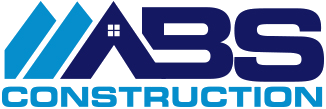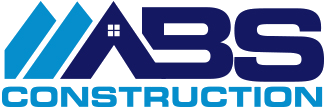That Which Is Measured Improves
Karl Pearson was an English mathematician in the 1850s. If you struggled in your college Statistics course, feel free to blame him (among others most likely) because he invented it. Despite how you might feel about correlations, standard deviations, and sampling errors, Professor Pearson left us with a useful and challenging quote:
“That which is measured improves. That which is measured and reported improves exponentially.”
One of the first rules of dieting and weight loss is to regularly climb on the scales to measure your loss or gain. This helps you understand what’s working and provides encouragement (hopefully).
In sports, we measure things like batting averages, shooting percentage, and yards-per-carry to identify and work on areas that need improvement. Those types of statistics are key performance indicators. We measure them because they provide an indication of individual and even team performance that eventually impacts wins and losses.
The Challenges of Business Measurements
We measure things in business. Unfortunately, too many businesses rely mostly on financial statements that tell the story long after-the-fact. Measurements become a report card instead of a tool to help adjust before it’s too late. At Gregory Construction, we are always looking for ways to improve our operations and performance. Gino Wickman’s book Traction has played a huge part in our success and in helping us understand what is going on in our business.
The Traction model challenges us to build a scorecard of key performance indicators across the entire organization, and measure and report those results to the leadership team weekly. The book asks a provocative question: If you were stranded on a deserted island with no access to phone or email, what 2 or 3 numbers could you receive each week to understand the health of your business?
What a great question. Dig deep. Identify those daily activities that directly impact your future performance. Set targets and measure each one. Wouldn’t you want to know those numbers every Monday morning?
How Gregory Construction Uses the Traction Model
Each member of the Gregory Construction leadership team receives a weekly scorecard made up of the key performance indicators impacting his part of the business. We use this scorecard in our weekly meetings and go over the results within our individual departments to understand issues and adjust.
Here is breakdown of those scorecards from each member of the Gregory Construction leadership team!
Justin Harris – Business Development
In many ways, Business Development is a numbers game. The more hooks you throw into the water, the more fish you can catch. But there is a lot more to fishing…and to effective business development. We want to focus our efforts in fruitful areas and use the best techniques most likely to generate the correct results. At Gregory Construction, a few important things we measure each week include:
# of New Qualified Opportunities
# of Face-to-Face Client Visits
# of Phone Calls in Specific Target Markets
Measuring these activities helps us make sure we’re not only throwing enough hooks into the water but that we’re also fishing in the correct places. We want to focus our efforts on building lasting partnerships.
In the construction industry, planning capacity, staffing, revenues, and logistics is difficult and requires forward thinking. Measuring our Business Development efforts helps provide clarity for the future to guide decisions at the highest level of our company.
James Gill – Estimating
Wayne Gretzky said, “you miss 100% of the shots you don’t take.” When it comes to estimating and bidding projects, we want to take as many shots as possible, but we also need to be smart. Tracking key metrics related to our estimating allows us to continue to learn and get better.
Total Dollars Estimated per Week
Gross Margin Estimated per Week
Bid to Hit Ratio
Like all growing, well-run companies, Gregory Construction has established revenue goals for the next few years. Because we’ve tracked and studied key measurables for estimating, we’re able to understand exactly how much we need to bid across all our target markets to keep our pipeline filled with the right work.
Aaron Gregory – Construction Management
Once we win business, we must execute efficiently. Our goal is to always exceed the customer’s expectations with exceptional quality and on-time delivery. Production delays of any type will compromise a project and can quickly turn a plan upside down. The key things we measure include:
Job Cost to Complete
Schedule Updates
Equipment Utilization
We quote and staff jobs based on our estimated labor, production expenses, equipment requirements, and schedule. It’s vital that we know when an active project is veering off that original plan in time to make course corrections. We can’t afford to be asking “what happened” after a job is completed. Knowing how a job is progressing according to plan in real-time allows us to do our best work for our customers and for Gregory Construction.
Safety
Safety is a Gregory Construction core value. And that’s really an understatement. We think about safety every day and talk about safety in almost every meeting. We look at key performance indicators to help understand trends or issues within our operation.
Recordable Incident Rate
Near-Hits
First Aid Cases
By tracking and analyzing this data, we can adjust training plans, improve communication, or implement additional protection strategies to address concerns before they become a serious problem. We’re proud of our safety record and the improvements we’ve been able to make over the last few years.
Start Keeping Score
Of course, scorecards like this only work if you’re measuring the correct things. Our leadership team spent the better part of a full day in an off-site meeting identifying the most important things to measure. Even after that, we went back and forth a few times to get it right.
Building a scorecard to help manage your business only works if you put the time in upfront and treat it like a priority. If certain measures are not working or revealing the type of information you need, be willing to adjust.
We encourage any management team interested in seeing real organizational growth to build a weekly scorecard. Commit to identifying the right metrics. Be willing to adjust. And, maybe most importantly, commit to supporting each other, being transparent, and holding each other accountable.









